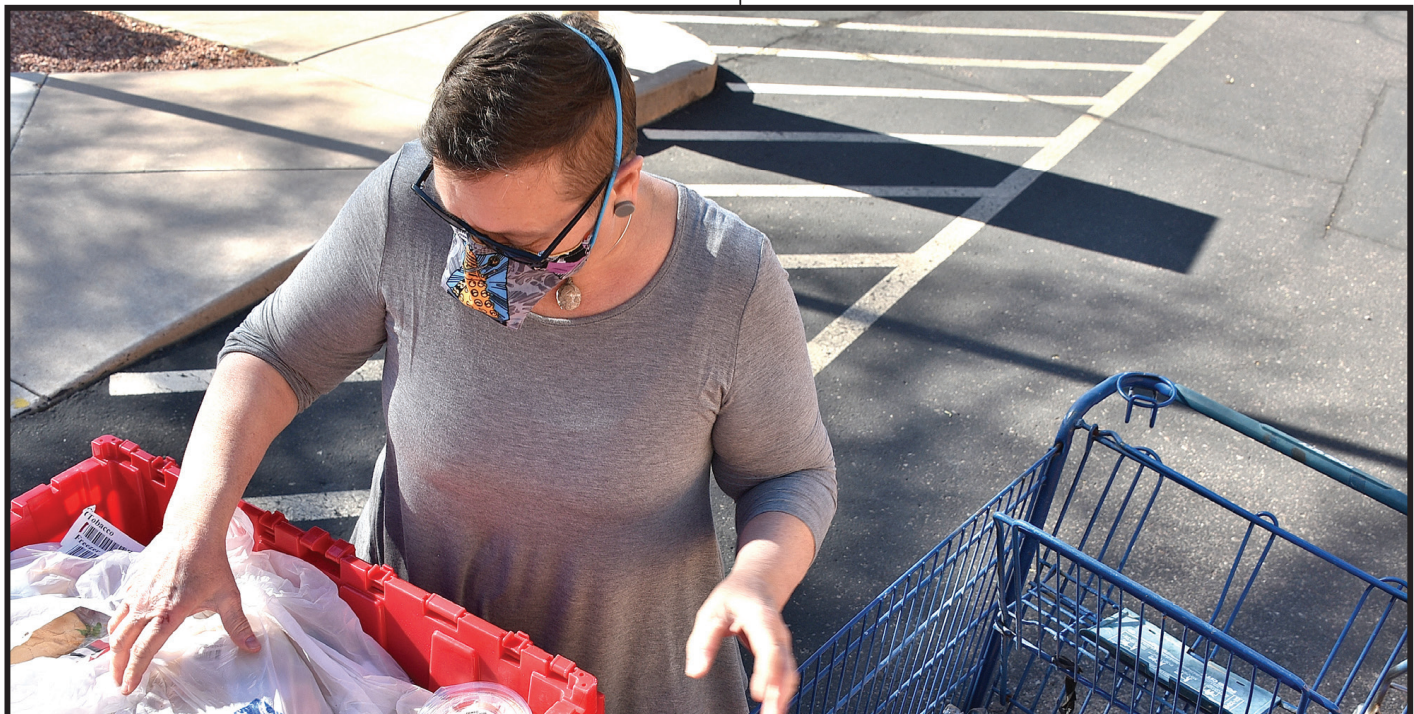
Hearty chicken casserole, creamy au gratin potatoes, tasty green beans and other comfort foods were on the New Year’s Day menu at two Tempe facilities that provide affordable housing to formerly homeless and low-income people.
None of the two-dozen residents at Good Shepherd Homes of AZ – East are executive chefs. Most don’t cook at all.
But a few warmed up dishes that enabled the diners to greet 2021 with full bellies.
The meal was thanks to Waste Not, a nonprofit that has created sustainable food systems in Arizona for more than 30 years.
Nearly 1 million Arizonans — 1 in 4 children and 1 in 5 adults — struggle with food insecurity because they lack consistent access to adequate food, according to Waste Note. The organization collects perishable and prepared foods that otherwise would have been discarded into landfills.
Donations come from grocery stores, restaurants, catering companies, resorts and event venues, and are delivered the same day to more than 70 nonprofit agencies serving those in need. These agencies include homeless shelters, transitional housing, senior facilities, preschools, after-school programs, rehabilitation centers and food pantries.
Waste Not has 56 volunteers helping its fleet of drivers who pick up and deliver about 3.5 million meals in metropolitan Phoenix each year.
This effort recently was streamlined by a new app developed by Waste Not partner Feeding America, which for 40 years has provided food to Americans in need through a nationwide network of food banks. The app, MealConnect (mealconnect.org), enables food businesses to post available products for donation which then are matched seamlessly to local food banks and other nonprofit partners for distribution.
Before MealConnect, Waste Not was using staff drivers and refrigerated trucks to pick up and deliver. That became costly, especially when the coronavirus hit and donations dropped off, according to Hillary Bryant, community engagement manager.
MealConnect’s launch last spring enabled Waste Not to begin using volunteer drivers at a time when area food banks were cutting back on volunteers due to risks from the coronavirus. The timing could not have been better, she said, given the jump in need due to the pandemic.
“The benefits have been three-pronged,” said Bryant, noting that more than 500 meals were delivered via MealConnect in 2020. “It’s great to see the connection between those who have food to give, those who really need food and those who want to help their communities by volunteering in a way that they are not around a lot of people. Contributions of food, from major grocery stores and Arizona State University to swanky resorts and small businesses, have run the gamut.”
Trays of refried beans, boxes of cupcakes, crates of produce and individual containers of salmon, broccoli and rice have been donated. Recently, Waste Not received a large number of baked goodies from Urban Cookies, which were delivered to the Boys & Girls Clubs — an offering that did not disappoint.
“The kids went gaga,” she said. “A simple cookie brings joy in hard times.”
At Good Shepherd Homes, said service coordinator Lauren Davis, residents receive food from Waste Not every Wednesday — sub sandwiches, salads, sheet cakes and even meats, which they put into slow cookers, adding vegetables they’ve received from food banks, Stone Soup-style.
“There’s no hunger at Good Shepherd because of Waste Not,” Davis said. “A lot of our people came from homelessness, and they are grateful to have sandwiches and other heat-and-eat foods.”
In 2019, Waste Not rescued nearly 2 million pounds of food. Donations (visit mealconnect.org/donate) are needed more now than ever, Bryant said.
Need does not end even when the spirit of giving tends to wane after the holidays, Davis reminds.
“People often donate to a lot of food drives in the fall and winter, and then spring comes and that tapers off,” she said. “But hunger doesn’t just go away after the holidays are over, particularly in a pandemic.”


I want to help my coworkers with a pantry. We work at a nonprofit that collected two grocery carts of food ( in December) and gave it all to a food bank! My coworkers ( essential) had been furloughed and isolated and are now back to work (at minimum wage) but don’t always get their hours. The company has a ratio (staff to developmentally disabled adults) and send staff home and/or cuts hours.
I want to start a pantry. Please advise.